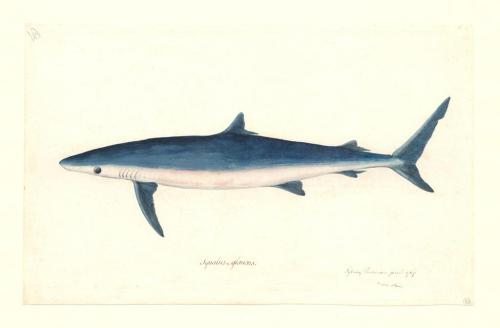
Egyptian, Fragmentary Head of a Queen, 1352-1356 B.C.E. Image provided by The Metropolitan Museum of Art.
Today’s Open Access initiative by the Metropolitan Museum of Art and their generous partnership with Artstor help ensure that these images will reach scholarly audiences in more than 1,700 institutions worldwide. Nancy Minty, Artstor’s Collections Editor, explores some of the Met’s history, the materials in the release, and its implications for future study.
In 1872, the Metropolitan Museum opened its doors in a brownstone on Fifth Ave., which housed its nascent permanent collection of 175 paintings. The New York Evening Mail heralded the moment as the birth of the “royal infant,” and one of the founders William Cullen Bryant struck a redemptive tone in his opening address: “My friends, it is important that we should encounter the temptations to vice in this great and too rapidly growing capital by attractive entertainment of an innocent and improving nature.”1 Salomon van Ruysdael’s Drawing the Eel, 1650s, still a standout from the inaugural collection, typifies the folksy, wholesome imagery that bolstered Bryant’s mission.
Today, nearly 150 years later, The Met is among leaders worldwide with an encyclopedic collection that numbers more than 2 million objects, spanning 17 diverse curatorial departments and 5000 years, from antiquities to photography, and including masterworks in all fields. Its range may be documented by countless juxtapositions of outstanding works from diverse cultures, as for example, an ivory handle from ancient Egypt, Prancing Horse, ca. 1391-1353 B.C.E., an engraving by the German Renaissance artist Dürer, The Little Horse, 1505. and a monumental painting by Rosa Bonheur, The Horse Fair, 1853-55, each depicting horses, albeit of very different stripes.

Albrecht Dürer, The Little Horse, 1501. Image provided by The Metropolitan Museum of Art.

Rosa Bonheur, The Horse Fair, 1853-55. Image provided by The Metropolitan Museum of Art.

Egyptian, Prancing Horse, c. 1391-1353 B.C.E. Image provided by The Metropolitan Museum of Art.
The museum building itself has accrued around 20 successive structures or wings to the nucleus designed by Calvert Vaux in 1880, and it currently occupies more than two million square feet, equal to about 35 football fields (not including Breuer and Cloisters locations). Moreover, in 2016 it welcomed 6.7 million visitors.
Now in an unprecedented step among major American museums, The Met has made a major new foray into the global virtual space by sharing open content for 375,000 images of public domain works in the collection. ITHAKA and Artstor are proud to cooperate in this initiative along with Creative Commons and the Wikimedia Foundation. The implications of this move are significant. As Loic Tallon, the museum’s Chief Digital Officer has framed it “In our digital age, the Museum’s audience is not only the 6.7 million people who visited The Met’s three locations in New York City this past year but also the 3.2 billion internet-connected individuals around the world.”
(more…)
Read Full Post »










